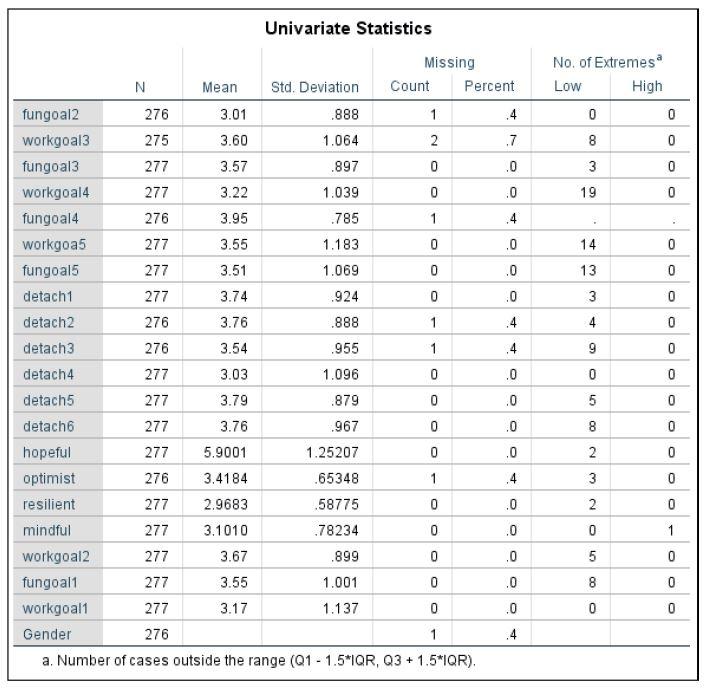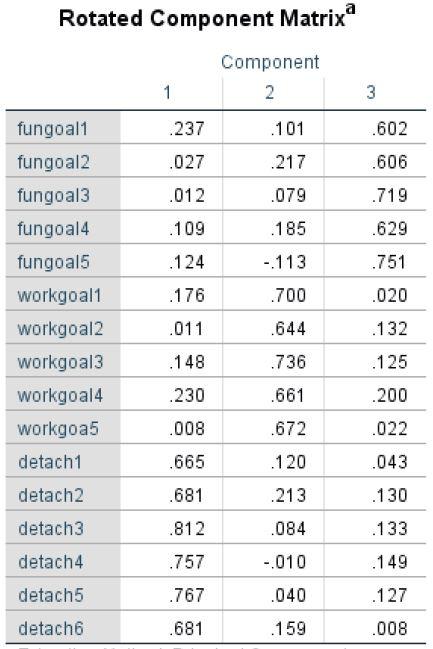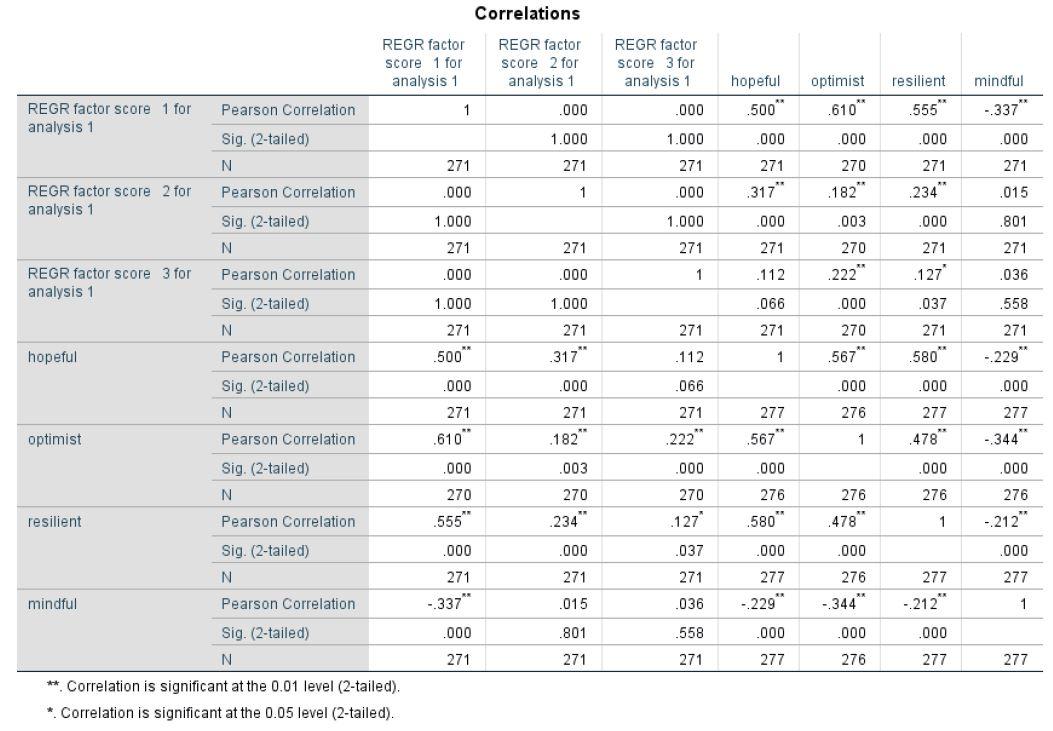Chapter 13: Factor Analysis
Short answer questions
1. Explain the “tug of war” between parsimony and completeness as it pertains to the issue of determining the number of factors to retain.
Main Points:
- There is a desire to account for as much of the variance in the observed variables as possible (completeness).
- At the same time there is a desire to keep the number of retained components as few as possible (parsimony).
- There is an additional dimension to this tug-of-war: comprehension. The structure needs to be comprehensible and make sense conceptually.
2. What is the difference between orthogonal and oblique rotation?
Main Points:
- The components derived from a Varimax rotation are kept orthogonal (uncorrelated), as are their corresponding factor scores.
- The components derived from an oblique rotation are allowed to correlate, as are their corresponding factor scores.
- In an oblique rotation the Rotated Components Matrixresulting from an orthogonal rotations is replaced by a Pattern Matrix and a Structure Matrix. The Pattern Matrix contains the new component loadings. The row for each original item is the equivalent of a regression equation where the standardized observed variable is expressed as a function of the the regression coefficients (slopes). The new loadings are in effect regression coefficients. The Structure Matrix represents the correlations between the TAI items and the oblique components.
- In an oblique rotation, because the two components are correlated, the regression coefficients and correlations are not identical, as they are in an orthogonal rotation ( Rotated Component Matrix).
3. What is the driving principle of Varimax rotation?
Main Points:
- The goal of Varimax rotation is simple: maximize or minimize each observed variable’s loading on each component.
- The ultimate goal is to create a component matrix of 1.0s and 0.0s.
4. Why are the reliabilities of the individual observed variables of concern when conducting a PCA?
Main Points:
- The reliabilities of the individual observed variables are an important factor in determining the stability of the correlation matrix.
- As discussed in Chapter 7, a variable’s test-retest reliability becomes weaker, so does the possible maximum correlation with another variable. Stated otherwise, as the proportion of error variance in the measurement of a variable increases, the correlation between that variable and another variable becomes more and more random in nature, regardless of the true relation between the two variables.
- Unequal reliabilities results in the relative strengths of the correlations among the items becoming unstable. This can influence the pattern of factor loadings.
- In such circumstances there is little likelihood of replicating the results of a PCA.
5. Discuss four factors that influence the researcher’s choice of rotation and final model.
Main Points:
- What is expected? Do you judge the underlying theoretical constructs to be independent or related? If you deem (expect) the components to be independent, then using an oblique rotation to gain a somewhat “better fit” is inappropriate.
- Does previous research indicate how the components may or may not be related?
- What is the purpose of the analysis?
- The principle of a simple structure needs to be taken into account. A factor analysis has a simple structure to the extent that the loadings tend either toward 0.0 or toward 1.0.
Data set questions.
1. A social psychologist who is interested in “life satisfaction” devised a scale to estimate what she thought were three factors of importance: work, fun, and detachment (being unconcerned with most events). She also thought that there would be a difference between men and women on the various factors. Finally, she wanted to know if any of the three proposed factors were related to hopefulness, optimism, resilience, and mindfulness. To explore the topic and her scale she administered the scale to 277 students in her introductory social psychology course. Conduct a PCA on the “lifeSatisfactionScale.sav” on the textbooks web page. Is there evidence for the 3 components? The work items are labelled with “workgoal,” the fun items are labelled with “fungoal,” and the detachment items are labelled with “detach.” Evaluate both individual items (communalities) as well as the overall model. If there are three components (orthogonal or oblique), are any of them related to hopefulness, optimism, resilience, or mindfulness? What limitations do you think she would need to consider when interpreting her findings?
Main Points:
a. Testing for missing data
No variable has more than 1% missing data. There is no problem.

b. Running PCA using eigenvalue of 1.0 as a cut off three factors are retained with a total of 51.735% of the variance explained.
c. The three eigenvalues are 4.46, 2.053, and 1.765.
d. The rotated component matrix indicates that the three proposed subsets segregate into appropriated into the three factors (components). Factor scores were saved.

e. Using independent-samples t-test, no differences were found between the men and the women in terms of the fun and the detachment factor scores. There was a gender difference in term of the importance of work.
f. Correlations among the three factor scores and hopefulness, optimism, resiliency, and mindfulness.

Detachment factor scores (factor scores 1) are significantly (moderately to strongly) correlated with hopeful, optimism, resilient, and mindful. Work (factor scores 2) is weakly correlated with optimism and resilient. Fun factor scores (factor scores 3) are also weakly related to optimism and resilient. AMONG UNIVERSITY STUDENTS, detachment appears to be the only component of life satisfaction related to hope and mindfulness.
